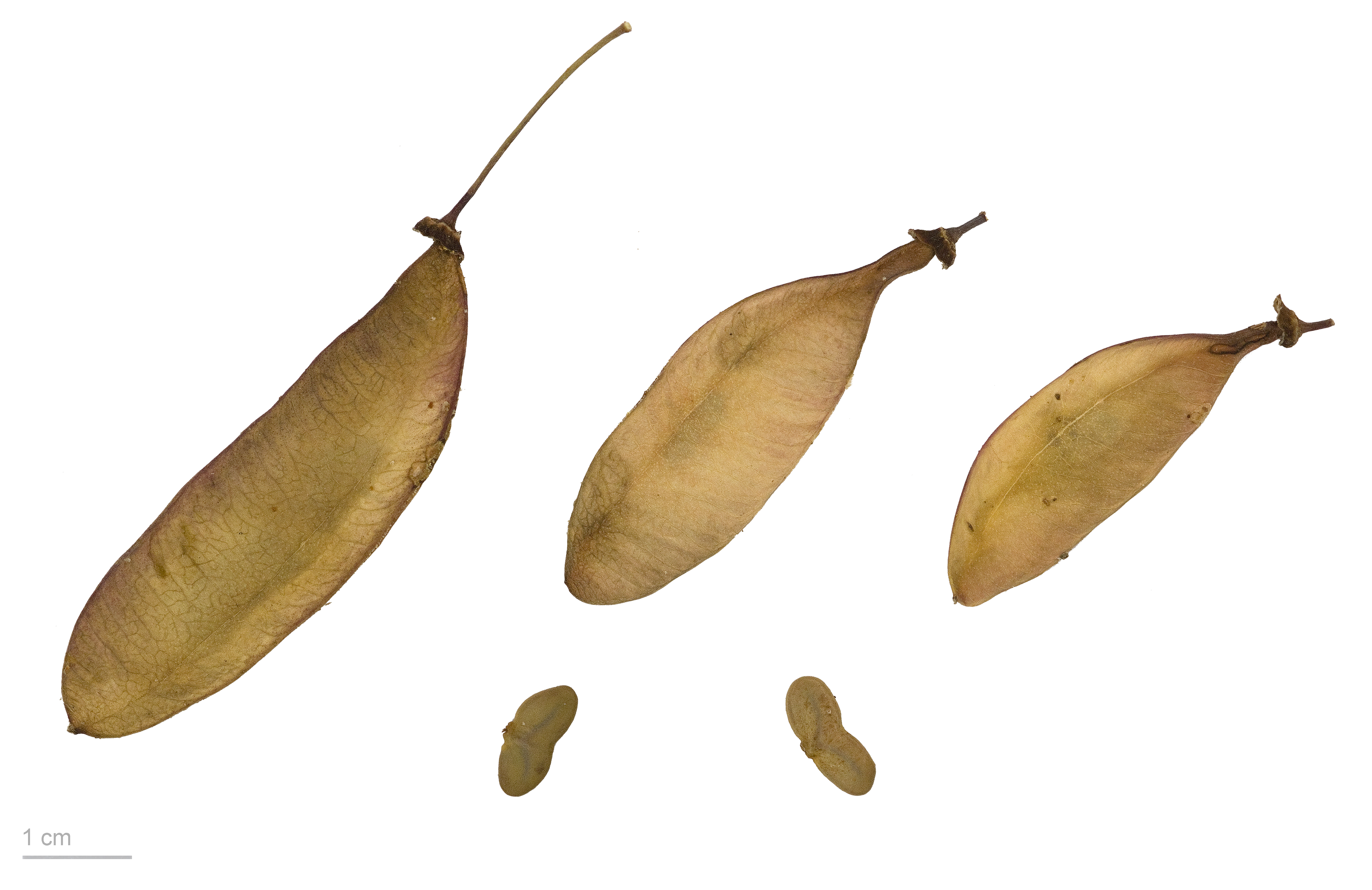|
Caesalpinieae
The tribe Caesalpinieae is one of the subdivisions of the plant family Fabaceae: subfamily Caesalpinioideae. Genera Caesalpinieae once included many more genera, but modern molecular phylogenetics Molecular phylogenetics () is the branch of phylogeny that analyzes genetic, hereditary molecular differences, predominantly in DNA sequences, to gain information on an organism's evolutionary relationships. From these analyses, it is possible to ... indicated that these should be transferred to other clades. Caesalpinieae currently comprises the following genera: *''Arquita'' E. Gagnon, G. P. Lewis & C. E. Hughes 2015 *''Balsamocarpon'' Clos 1846 *''Biancaea'' (Tod. 1860) E. Gagnon & G. P. Lewis 2016 *''Caesalpinia'' (L. 1753) E. Gagnon & G. P. Lewis 2016 *''Cenostigma'' (Tul. 1843) E. Gagnon & G. P. Lewis 2016 *''Cordeauxia'' Hemsl. 1907 *''Coulteria'' (Kunth 1824) E. Gagnon, Sotuyo & G. P. Lewis 2016 *''Denisophytum'' (R. Vig. 1948) E. Gagnon & G. P. Lewis 2016 *''Erythrost ... [...More Info...] [...Related Items...] OR: [Wikipedia] [Google] [Baidu] |
Caesalpinioideae
Caesalpinioideae is a botanical name at the rank of subfamily, placed in the large family Fabaceae or Leguminosae. Its name is formed from the generic name ''Caesalpinia''. It is known also as the peacock flower subfamily. The Caesalpinioideae are mainly trees distributed in the moist tropics, but include such temperate species as the honeylocust (''Gleditsia triacanthos'') and Kentucky coffeetree (''Gymnocladus dioicus''). It has the following clade-based definition: The most inclusive crown clade containing ''Arcoa gonavensis'' Urb. and ''Mimosa pudica'' L., but not '' Bobgunnia fistuloides'' (Harms) J. H. Kirkbr. & Wiersema, ''Duparquetia orchidacea'' Baill., or '' Poeppigia procera'' C.Presl In some classifications, for example the Cronquist system, the group is recognized at the rank of family, Caesalpiniaceae. Characteristics * Specialised extrafloral nectaries often present on the petiole and / or on the primary and secondary rachises, usually between pinnae or lea ... [...More Info...] [...Related Items...] OR: [Wikipedia] [Google] [Baidu] |
Mezoneuron
''Mezoneuron'' is a genus of flowering plants in the legume family, Fabaceae. It belongs to the subfamily Caesalpinioideae and the tribe Caesalpinieae. Characteristics and distribution This genus consists of lianas, often with the characteristic 'cat's claw' spines on their stems. Pods are one or more seeded, with a longitudinal (often narrow) wing along the upper suture and a wing 2 mm or more wide, which may be papery, coriaceous or woody. They may be found in Africa, Madagascar and SE Asia across the Malay Peninsula and Archipelago to New Guinea, New Caledonia and Australia, one species endemic to Hawaii. Species ''Mezoneuron'' comprises the following species: * '' Mezoneuron andamanicum'' Prain * '' Mezoneuron angolense'' Welw. ex Oliv. * '' Mezoneuron baudouinii'' Guillaumin * '' Mezoneuron benthamianum'' Baill. * '' Mezoneuron brachycarpum'' Benth. * '' Mezoneuron cucullatum'' (Roxb.) Wight & Arn. * '' Mezoneuron enneaphyllum'' (Roxb.) Wight & Arn. ex Voigt * '' Mezo ... [...More Info...] [...Related Items...] OR: [Wikipedia] [Google] [Baidu] |
Hultholia
''Hultholia mimosoides'' is a liana species and the sole species in the genus ''Hultholia''. It was formerly placed in the genus ''Caesalpinia'' but phylogenetic studies identified the group to be polyphyletic, leading the placement of ''Caesalpinia mimosoides'' in a new genus, ''Hultholia'' in the tribe Caesalpinieae. Its distribution includes: Bangladesh, Yunnan in China, India, Laos, Myanmar, Thailand, and Vietnam. This species is distinct and can be separated from ''Caesalpinia'' by the glandular spots covering the stem, calyx, and fruits. The pods are falcate and inflated. The needle-like trichomes on the stem are different from the prickles on stems of species in ''Mezoneuron'' and other genera previously placed in ''Caesalpinia''. The genus name commemorates the Cambodian taxonomist Salvamony Hul Thol. Gallic acid can be extracted from the plant. It is a food plant for the caterpillars of ''Eurema blanda ''Eurema blanda'', the three-spot grass yellow, is a small butte ... [...More Info...] [...Related Items...] OR: [Wikipedia] [Google] [Baidu] |
Biancaea
''Biancaea'' is a genus of flowering plants in the family Fabaceae. It belongs to the subfamily Caesalpinioideae and the tribe Caesalpinieae. Species ''Biancaea'' comprises the following species: * '' Biancaea decapetala'' (Roth 1821) O. Deg. 1936—Mysore thorn (India) * '' Biancaea godefroyana'' (Kuntze 1891) Molinari, Mayta & Sánchez Och. 2016 * '' Biancaea millettii'' (Hook. & Arn. 1841 833 E. Gagnon & G. P. Lewis 2016 * '' Biancaea oppositifolia'' (Hattink 1974) Molinari & Mayta 2016 * '' Biancaea parviflora'' (Prain ex King 1974) Mayta & Molinari 2016 * ''Biancaea sappan'' (L. 1753) Tod. 1875—Sappanwood (Southeast Asia, Malay Archipelago The Malay Archipelago (Indonesian/ Malay: , tgl, Kapuluang Malay) is the archipelago between mainland Indochina and Australia. It has also been called the "Malay world," " Nusantara", "East Indies", Indo-Australian Archipelago, Spices Arch ...) References External links * * {{Taxonbar, from=Q39046944 Caesalpinieae ... [...More Info...] [...Related Items...] OR: [Wikipedia] [Google] [Baidu] |
Stenodrepanum
''Stenodrepanum bergii'' is a species of flowering plants in the legume family, Fabaceae. It belongs to the subfamily Caesalpinioideae. It is native to Argentina Argentina (), officially the Argentine Republic ( es, link=no, República Argentina), is a country in the southern half of South America. Argentina covers an area of , making it the second-largest country in South America after Brazil, th .... References Caesalpinieae Monotypic Fabaceae genera {{Caesalpinioideae-stub ... [...More Info...] [...Related Items...] OR: [Wikipedia] [Google] [Baidu] |
Erythrostemon
''Erythrostemon'' is a genus of flowering plants in the legume family, Fabaceae. Its native range is tropical & subtropical America. Species ''Erythrostemon'' comprises the following species: * '' Erythrostemon acapulcensis'' (Standl.) E. Gagnon & G. P. Lewis * '' Erythrostemon angulatus'' (Hook. & Arn.) E. Gagnon & G. P. Lewis * '' Erythrostemon argentinus'' (Burkart) E. Gagnon & G. P. Lewis * '' Erythrostemon caladenia'' (Standl.) E. Gagnon & G. P. Lewis * '' Erythrostemon calycinus'' (Benth.) L. P. Queiroz * '' Erythrostemon caudatus'' (A. Gray) E. Gagnon & G. P. Lewis—Tailed nicker * '' Erythrostemon coccineus'' (G. P. Lewis & J. L. Contr.) E. Gagnon & G. P. Lewis * '' Erythrostemon coluteifolius'' (Griseb.) E. Gagnon & G. P. Lewis * '' Erythrostemon coulterioides'' (Griseb. emend. Burkart) E. Gagnon & G. P. Lewis * '' Erythrostemon epifanioi'' (J. L. Contr.) E. Gagnon & G. P. Lewis * '' Erythrostemon exilifolius'' (Griseb.) E. Gagnon & G. P. Lewis * '' Erythrostemon exoste ... [...More Info...] [...Related Items...] OR: [Wikipedia] [Google] [Baidu] |
Pomaria (plant)
''Pomaria'' is a genus of flowering plants in the legume family, Fabaceae. It belongs to the subfamily Caesalpinioideae Caesalpinioideae is a botanical name at the rank of subfamily, placed in the large family Fabaceae or Leguminosae. Its name is formed from the generic name ''Caesalpinia''. It is known also as the peacock flower subfamily. The Caesalpinioideae ar .... Species ''Pomaria'' comprises the following species: * '' Pomaria austrotexana'' B. B. Simpson * '' Pomaria brachycarpa'' (A. Gray) B. B. Simpson—Broadpad nicker * '' Pomaria burchellii'' (DC.) B. B. Simpson & G. P. Lewis * '' Pomaria canescens'' (Fisher) B. B. Simpson * '' Pomaria fruticosa'' (S. Watson) B. B. Simpson * '' Pomaria glandulosa'' Cav. * '' Pomaria jamesii'' (Torr. & A. Gray) Walp. * '' Pomaria lactea'' (Schinz) B. B. Simpson & G. P. Lewis * '' Pomaria melanosticta'' S. Schauer—Parry's holdback * '' Pomaria multijuga'' (S. Watson) B. B. Simpson * '' Pomaria parviflora'' (Micheli) B. B. Simpson ... [...More Info...] [...Related Items...] OR: [Wikipedia] [Google] [Baidu] |
Paubrasilia
''Paubrasilia echinata'' is a species of flowering plant in the legume family, Fabaceae, that is endemic to the Atlantic Forest of Brazil. It is a Brazilian timber tree commonly known as Pernambuco wood or brazilwood ( pt, pau-de-pernambuco, ; Tupi: ) and is the national tree of Brazil. This plant has a dense, orange-red heartwood that takes a high shine, and it is the premier wood used for making bows for stringed instruments. The wood also yields a historically important red dye called brazilin, which oxidizes to brazilein. The name ''pau-brasil'' was applied to certain species of the genus ''Caesalpinia'' in the medieval period, and was given its original scientific name ''Caesalpinia echinata'' in 1785 by Jean-Baptiste Lamarck. More recent taxonomic studies have suggested that it merits recognition as a separate genus, and it was thus renamed ''Paubrasilia echinata'' in 2016. The Latin specific epithet of ''echinata'' refers to hedgehog, from ''echinus'', and desc ... [...More Info...] [...Related Items...] OR: [Wikipedia] [Google] [Baidu] |
Lophocarpinia
''Lophocarpinia aculeatifolia'' is a species of flowering plants in the legume family, Fabaceae. It belongs to the subfamily Caesalpinioideae Caesalpinioideae is a botanical name at the rank of subfamily, placed in the large family Fabaceae or Leguminosae. Its name is formed from the generic name ''Caesalpinia''. It is known also as the peacock flower subfamily. The Caesalpinioideae ar .... References Caesalpinieae Monotypic Fabaceae genera {{Caesalpinioideae-stub ... [...More Info...] [...Related Items...] OR: [Wikipedia] [Google] [Baidu] |
Hoffmannseggia
''Hoffmannseggia'' is a genus of flowering plants in the pea family, Fabaceae, known generally as rushpeas. These are pod-bearing herbs and subshrubs native to the Americas and southern Africa. The generic name honors Johann Centurius, Count of Hoffmannsegg, a nineteenth-century German nobleman and botanist. Selected species ''Hoffmannseggia'' comprises the following species: * '' Hoffmannseggia aphylla'' (Phil.) G. P. Lewis & Sotuyo * '' Hoffmannseggia arequipensis'' Ulibarri * '' Hoffmannseggia doelli'' Phil. ** subsp. ''argentina'' Ulibarri ** subsp. ''doellii'' Phil. * '' Hoffmannseggia drepanocarpa'' A. Gray—sicklepod holdback * ''Hoffmannseggia drummondii'' Torr. & A. Gray—dwarf nicker * '' Hoffmannseggia erecta'' Phil. * '' Hoffmannseggia eremophila'' (Phil.) Burkart ex Ulibarri * ''Hoffmannseggia glauca'' (Ortega) Eifert—Indian rushpea, pig-nut, hog potato * ''Hoffmannseggia humilis'' (Mart. & Galeotti) Hemsl. * ''Hoffmannseggia intricata'' Brandeg ... [...More Info...] [...Related Items...] OR: [Wikipedia] [Google] [Baidu] |
Hererolandia
''Hererolandia pearsonii'' is a species of flowering plants in the family Fabaceae. It belongs to the subfamily Caesalpinioideae. It is native to Namibia Namibia (, ), officially the Republic of Namibia, is a country in Southern Africa. Its western border is the Atlantic Ocean. It shares land borders with Zambia and Angola to the north, Botswana to the east and South Africa to the south and ea .... References External links Caesalpinieae Fabaceae genera Monotypic Fabaceae genera Taxa named by Louisa Bolus {{Caesalpinioideae-stub ... [...More Info...] [...Related Items...] OR: [Wikipedia] [Google] [Baidu] |
Haematoxylum
''Haematoxylum'' is a genus of flowering plants in the legume family, Fabaceae, subfamily Caesalpinioideae and the tribe Caesalpinieae. Species ''Haematoxylum'' comprises the following species: * ''Haematoxylum brasiletto'' H.Karst.—Palo Brasil, Brazilette, Peachwood (Mexico, Central America, Colombia) * ''Haematoxylum calakmulense'' Cruz Durán & M. Sousa * ''Haematoxylum campechianum'' L.—Logwood (Southern Mexico, Northern Central America) * ''Haematoxylum dinteri ''Haematoxylum'' is a genus of flowering plants in the legume family, Fabaceae, subfamily Caesalpinioideae and the tribe Caesalpinieae. Species ''Haematoxylum'' comprises the following species: * ''Haematoxylum brasiletto'' H.Karst.—Palo Bras ...'' Harms * '' Haematoxylum sousanum'' Cruz Durán & J. Jiménez Ram. References External links Caesalpinieae Fabaceae genera {{Caesalpinioideae-stub ... [...More Info...] [...Related Items...] OR: [Wikipedia] [Google] [Baidu] |

